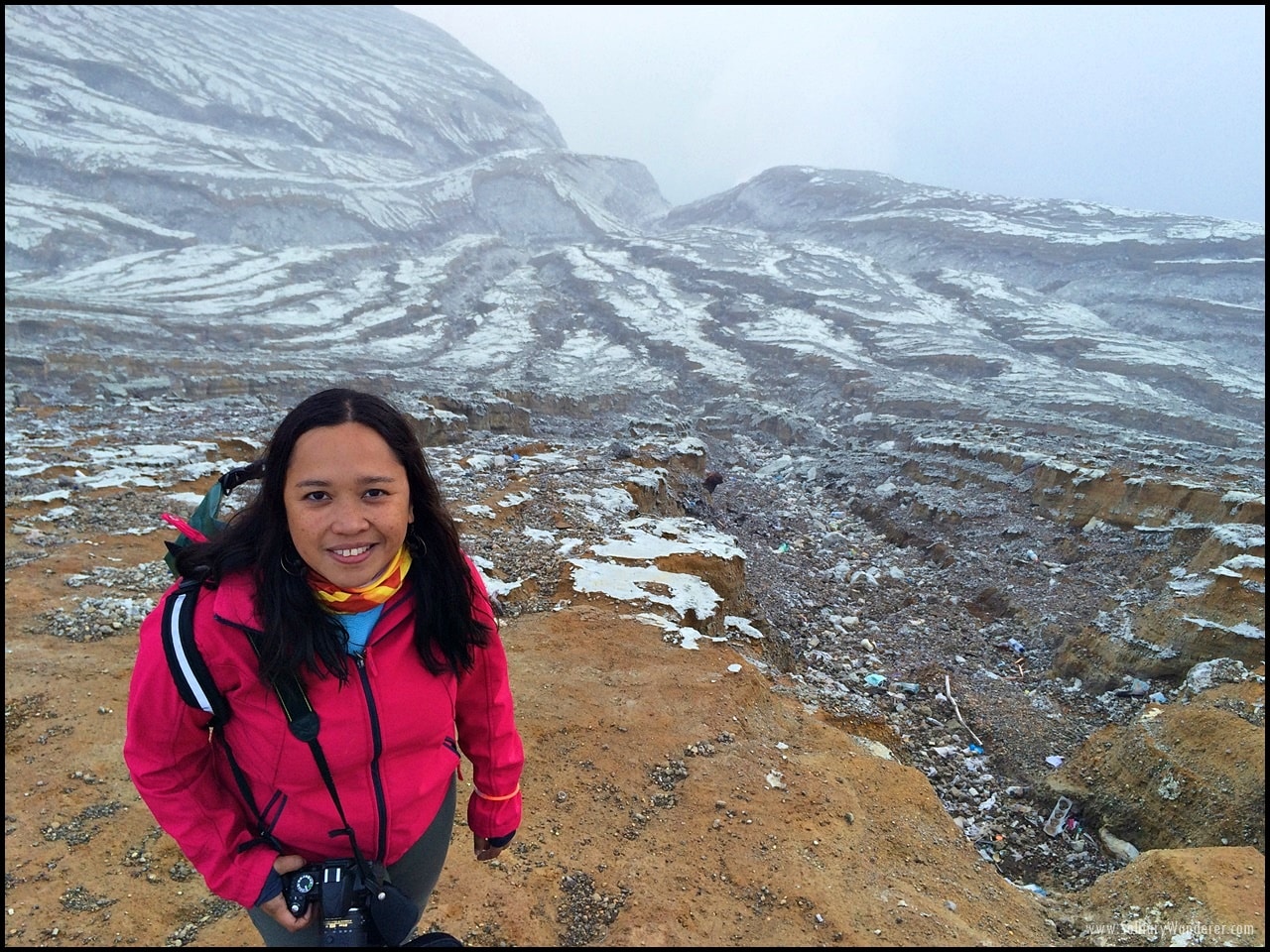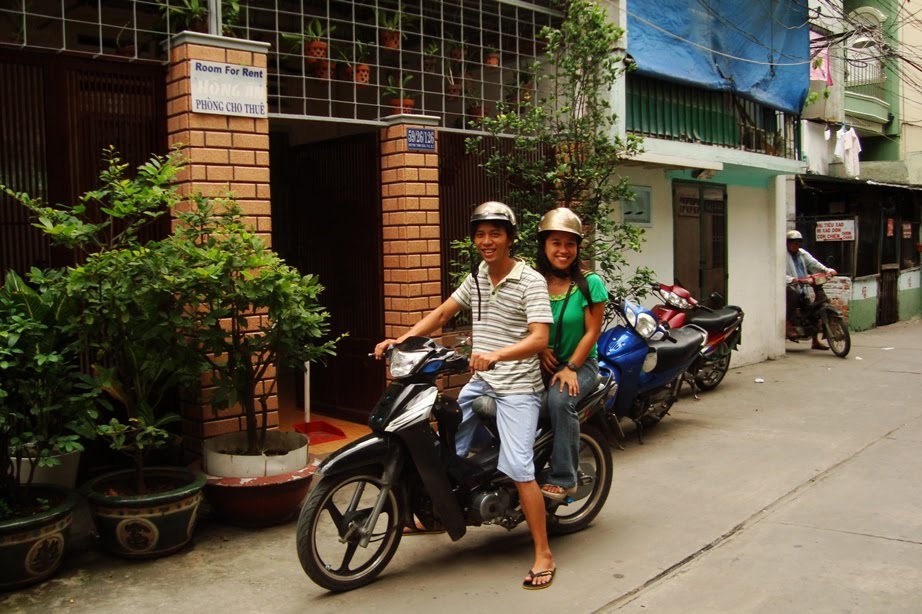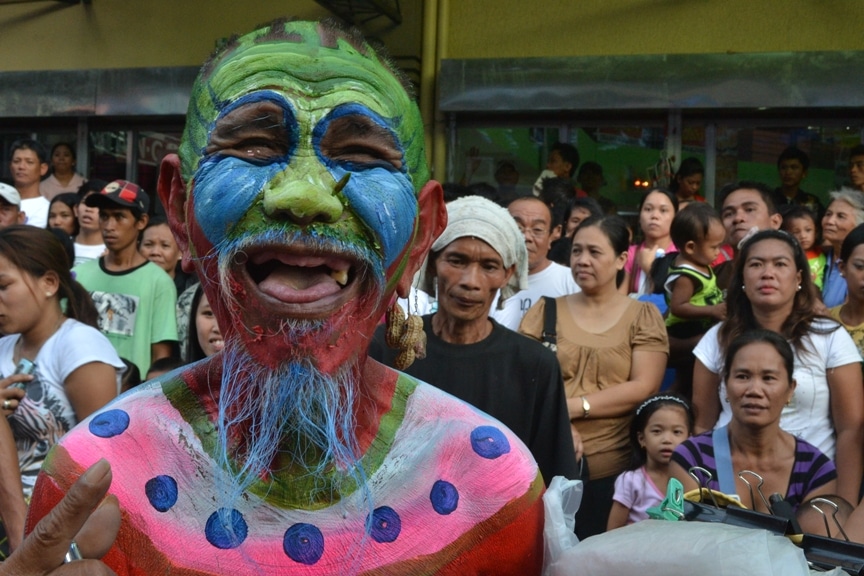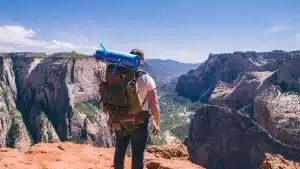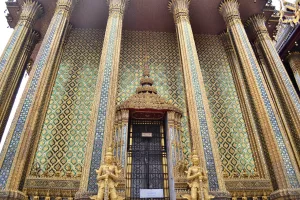Backpacking Southeast Asia, solo or otherwise, is an incredible experience and you should try it, at least once.
Note, of course, that not all Southeast Asian countries are the same (duh) so don’t expect behaviors that are okay in the Philippines, for example, to be also okay in Singapore.
For your reference, the eleven countries in Southeast Asia are Brunei, Cambodia, East Timor, Indonesia, Laos, Malaysia, Myanmar, the Philippines, Singapore, Thailand, and Vietnam.
I wholeheartedly recommend to do some readings before going — whether on travel guides, travel blogs, government websites, and magazines. This helps you prepare and know what to expect.
These backpacking Southeast Asia tips are more applicable to some countries than others, specifically Cambodia, Indonesia, Malaysia, the Philippines, Thailand, and Vietnam.
1. Find out about the needed visas and their fees
Remember to read about the visa requirements!
Different countries in Southeast Asia have different visa requirements, and the visas have different costs depending on the passport you may have. For example, Americans need a visa to Vietnam, which can be obtained online before traveling. Knowing the price of the visa will help to avoid some border scams.
Make sure to also check if there is any specific requirement for the passport.
2. Always have travel insurance
Yes, I know, a lot of people don’t think they need travel insurance. It can be expensive, especially if you travel long-term.
However, compare the cost of the travel insurance with the potential costs you might need if you have an accident. Too many travelers forgo having insurance and end up setting up a GoFundMe when they crash their motorbikes in Bangkok or slip from a cliff in Bali. Believe me: a travel insurance is a must. Prioritize getting one before you leave.
3. Take a picture of your passport and other travel documents and email it to yourself and/or a friend/family
Make sure to keep your documents safe when you are on the move. To be on the safe side in case all precautions fail, scan your passport (or take a pic) and send a copy to yourself and to a trusted person (which, for me, is my sister). This will make the process of getting a new passport, in case you lose yours, much easier.
Another tip is to always carry a few spare passport photos. They will come handy for visas and it is a very useful thing to keep in mind when backpacking Southeast Asia.
3. Plan to cover the longer distances by plane
Backpacking Southeast Asia usually means lots of bus and train travel. But…does it really have to be?
Traffic in Southeast Asia is terrible, and unless you are getting a sleeper bus, traveling can be really uncomfortable and tiring, with shuttle buses that are packed to the brim with people and their luggage, and the driving totally mad (honking is the rule in some countries, for whatever reason). It is way better to cover longer distances by plane, especially as it is easy to get cheap flights.
4. Don’t exchange currency at the airport, and always count the exact change
For whatever reason, exchanging currency at the airport costs way more than doing it at any other place in the city. Furthermore, it is not uncommon that even in banks the attendants who exchange the money “forget” to give you the whole amount expected.
Always count the money on the spot, and demand the whole amount if anything is missing. It’s an essential lesson to learn when backpacking Southeast Asia.
When you do decide to exchange your money at the airport, make sure to keep your bags in front of you! I was very busy counting the hundreds of thousands of Vietnamese dong that I was given in the Saigon airport and didn’t realize two women had taken my luggage cart, with ALL my bags in it, including my laptop. They were already going out of the arrival area when I realized it. I didn’t know I could run that fast!
A related tip: Get a colorful luggage to make your bags easy to spot. I had two bags, and one of them was bright red. It made it easier for me to see from the currency exchange counter. Imagine if both my bags were black?
6. Always carry more than one debit and credit card
The last thing you want when backpacking Southeast Asia (or anywhere else, really) is to be left with no card and no way to get cash.
You see, sometimes banks block cards, or ATMs won’t accept yours (happened to me once). Cards can get lost, stolen (I had my two credit cards stolen in a hostel in Bangkok) and even de-magnetized with all the traveling.
So, make sure to carry several cards, keeping them separate so that you will still have one if thieves get the other. Carry one with you, one in your day pack, and one in your backpack, carefully hidden.
7. Carry spare cash
Cash is king when backpacking Southeast Asia!
Carry a decent amount of US dollars wherever you go, keeping it in different places. Give preference to US dollars as they are widely accepted. In case of emergency, having some cash will mean that you can easily get a meal, a bed, and at least local transportation, and call your family to wire you some money until you can sort things out.
8. Don’t book tours in advance — they cost much less locally
Backpacking Southeast Asia means traveling more or less spontaneously and booking things on the go.
You surely expect tours to be a bit cheaper when bought locally, but in Southeast Asia the difference can be up to 4 times less. I have been on a tour of the Mekong Delta in Vietnam where people who bought the package online, from home, paid something like US$160 and those who bought them locally paid only US$40.
Don’t be afraid not to find a tour or not to have time to arrange everything locally. Anything is possible in Southeast Asia. A tour will always pop up, and local operators will play their magic to find a suitable solution — and there will be considerable savings.
9. Pack light and use a backpack
Backpacking Southeast Asia can be truly uncomfortable and having the right travel gear is a requirement. Shuttle buses often don’t have a trunk and place the bags in between seats; lots of budget accommodation don’t have elevators and you may have to carry the bags all the way to the top floor; and when doing boat trips in Ha Long Bay, it is often necessary to carry bags on and off the boat.
All of this is much easier when carrying a backpack rather than a suitcase; even better if your backpack is actually light. Picking the right backpacking gear is a key factor when traveling in Asia.
10. Opt for solid toiletries
Knowing what to pack when backpacking Southeast Asia is essential. Solid shampoo properly placed in a tin, solid conditioner, and a bar of good soap instead of shower gel are way lighter than their liquid equivalents, and occupy less room in the backpack. There’s even solid sunscreen and solid insect repellent.
Solid toiletries help to pack lighter and can also be packed in a carry on. There’s also less risk of getting your stuff wet if the bottle breaks or opens! (Personal experience. Not fun!)
11. Always carry a toilet roll in your day pack
I have learned from many years of traveling that, especially in developing countries, toilets don’t usually come with toilet paper. Make it a habit to pack up a toilet roll in a sandwich bag — better yet, a pack of wet wipes! — and keep it in your day pack. It comes really handy especially during long bus journeys.
12. Do carry medicines and first aid kit
It is quite common to get sick when traveling. Crowded buses and trains and even planes are known to be excellent vehicles for viruses. You can also get diarrhea, which is NOT good when you’re in a bus traveling for hours!
Important: Check the country’s regulations regarding prescription medications. Some countries in Southeast Asia are really strict about drugs.
What I always have with me: medicines for migraine and diarrhea, paracetamol, painkiller, and antihistamine.
13. Eat local food
Food in Southeast Asia is good and cheap pretty much anywhere. Even after a month there, you won’t miss Western food at all, because local cuisine is so tasty. The best places to eat are actually on the street, as I have learned in Bangkok and Ho Chi Minh.
You can identify a good place to eat when you see a good amount of people eating (and possibly even forming a line). Their food is probably tasty, cheap, and more importantly, safe to eat.
14. Learn to cross the street
Traffic is mad in a lot of cities in Southeast Asia. There are lots of cars, and, in the case of Vietnam, millions of scooters. In Ho Chi Minh, for example, the key to crossing the street is to — literally — never stop to look. Just step off the curb, walk slowly and confidently, and scooters will avoid you.
Do not do this in the Philippines! We have buses and jeepneys that are always in a rush to pick up passengers and they may not see you quickly enough to brake. Use the pedestrian lane and overpass (an overhead bridge) when crossing major roads.
15. Ask to use the taxi meter
Taxi drivers often try to set a flat rate, but the price they suggest is generally higher than the one passengers should expect to pay otherwise. For example, when I arrived in Hanoi, the driver suggested a flat rate of 400,000 Vietnamese dong to take me to my hotel. I paid 310,000 with the meter.
In Saigon, the driver suggested a flat rate of 300,000 to take me from the airport to the backpackers area, but I read beforehand that it shouldn’t cost more than 150,000. I demanded to pay by the meter and ended up paying only 120,000. You should do the same.
Note, though, that a really common scam in Southeast Asia is a fast taxi meter. I’m certainly an experienced traveler and still got scammed by a taxi driver in Hanoi because I didn’t pay attention soon enough to see how fast the meter was going. After only a couple of streets, the meter was showing at 500,000 dong. I couldn’t get out of the taxi enough!
So, find out which taxi company is reliable in the country you’re visiting or if there are ride-sharing apps. The latter is more reliable. In the Philippines, for example, download the Grab app. You can use it for transportation and food delivery, among others.
16. Bring ear plugs
Traffic never stops in Southeast Asia, and in some countries, people have a real passion for honking. They honk to get others out of their way, they honk to get the traffic moving, they honk just to say they are driving by. If you can’t stand the noise of traffic when you are trying to sleep make sure to carry a pair of ear plugs to wear at night.
Besides, if you’re staying in hostels (dorms in Vietnam are very affordable, from US$5 and up), you take the risk of having a roommate who snores. Believe me, being kept awake by someone snoring is definitely an experience you won’t enjoy!
17. Don’t necessarily trust online reviews
It often happened to me that tour operators, hotels, and restaurants that have glowing reviews were a total disappointments. I asked myself how it was possible that such poor services had incredible reviews. It is quite simple: those reviews are often fake. A hint into knowing that the 5-star reviews are fake is when the reviewer has only left that one review.
Do check who is leaving the review before trusting it. Furthermore, be advised that hotels, restaurants, and tour operators can (and will) pay to remove bad reviews and get good ones.
18. Carry a travel towel
Hostels tend to skimp on towels, or guests have to pay to rent one. A travel towel is a good solution, as it is extremely light and it dries quickly, and it can also be used in the beach.
A good alternative to bring is a sarong. You can use it as a towel, a dress, a beach mat, a blanket, and so on.
19. Wear flip flops in the shower
I often see people walking around barefoot in hostels, including to go to the toilet. I may be a neat freak but I would rather avoid getting athletes’ foot or other sort of skin issues. Getting in the shower with flip flops is a good way to protect yourself against nasty stuff.
20. Ask permission to take photos
People in Southeast Asia love to pose for pictures, so much so that whenever they see a foreigner take a photo they would actually stop you and ask you to take one of them too. Some may even ask you to pose in the photo with them! Regardless of that, asking for permission to take a photo is always polite and appreciated.
Do you have any other tips for backpacking Southeast Asia?

